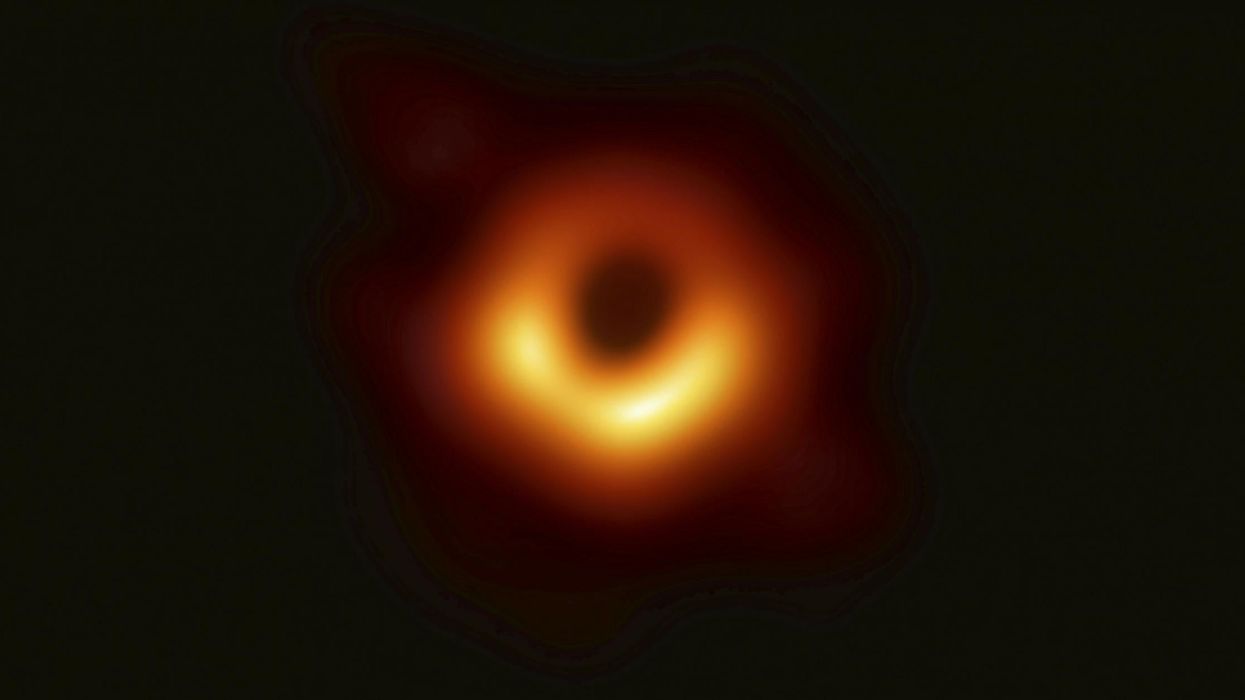News
Joe Sommerlad
Apr 10, 2019
An international team of scientists has just unveiled the first-ever photograph of a black hole in space - a major milestone in astrophysics that promises to greatly enhance humanity's understanding of the universe.
The image was recorded using a network of radio telescopes around the globe as part of the Event Horizon Telescope project, initiated in 2012 and bringing together stargazers from the US, China, Japan, Taiwan, Chile and Belgium.
What is a 'black hole'?
A black hole is a giant celestial body whose gravitational field is so powerful nothing can escape it, not even light, which is why we have never previously been able to see one in spite of their phenomenal size.
There are three types: primordial, stellar and supermassive black holes (yup, just like the Muse song, only not a song and in space).
The first is the smallest, the second the most common around our Milky Way and the third the largest - gargantuan monstrosities lurking at the centre of galaxies, their origins unknown.
A black hole's event horizon is the point of no return beyond which anything - stars, planets, gas, dust and all forms of electromagnetic radiation - gets swallowed into oblivion.
When were they first discovered?
Albert Einstein is credited with first predicting the existence of black holes through his famous theory of relativity in 1916 but the name for the phenomenon was coined by America astronomer John Wheeler as recently as 1967, four years before one was actually located for the first time.
This was the Cygnus X-1, tracked down through the advent of X-ray astronomy.
Where is the black hole we've taken a picture of?
The new picture shows a black hole at the centre of galaxy Messier 87, situated around 54 million light years from Earth in the Virgo galaxy cluster.
Harvard's Sheperd Doeleman, director of the Event Horizon Telescope Collaboration, could hardly contain his excitement:
We've seen what we thought was unseeable.
While Wednesday's achievement is undeniably a breakthrough to be celebrated, there's a reason black holes have fascinated science-fiction authors for decades.
Their power and potential is almost incomprehensibly terrifying.
Here are five alarming facts to keep you awake at night.
1. A black hole could eviscerate a human
A popular trope in science-fiction, from Red Dwarf to Interstellar, is that black holes are really wormholes through which astronauts might travel from one galaxy to another.
While we don't currently know enough to categorically dismiss the existence of wormholes, the prospects for a human being falling into a black hole are not good and the chances of survival non-existent.
The consensus has long been that the gravitational effect would pull them inexorably downwards, stretching them out like spaghetti before wrenching them apart.
But that assumption was challenged by Joseph Polchinski, a string theorist at the Kavli Institute for Theoretical Physics in Santa Barbara, California, in March 2012.
He and his students concluded the quantum effects of an event horizon would actually create a burning maelstrom of particles, causing the unlucky astronaut in question to be immediately incinerated instead. Either way, it's probably not going to be good.
2. Black holes can distort space and time
The extreme gravitational oomph they contain could even warp our experience of reality.
Assuming an astronaut encountering one weren't pulled apart or torched, they could expect to be dragged into a spiralling accretion of space debris - stars, planets, gases or dust.
While they would experience time normally, an onlooker would see them moving slower and slower. Looking back, the first man would see the second as moving fast, an effect caused by their differing experiences of the extreme velocity of the vortex.
3. Black holes can tear stars apart
If a star passes too close to a black hole, it too can be torn apart and ripped to shreds by the sheer force of the void's gravitational pull.
When the matter from the star begins to bleed towards the black hole, it gets faster, gets hotter and glows brightly, according to X-ray telescopes, which at least makes for a spectacular end.
4. Stellar black holes are born when stars die
If a star dies naturally - by burning out its stellar energy sources - gravity can violently overwhelm the natural pressure it has maintained throughout its life to retain its shape.
This will collapse its core, creating a neutron star with a blast of matter known as a supernova. What remains when zero volume is achieved will exist as a field of infinite density - a black hole. Our sun, by contrast, will simply smoulder out and leave behind a barren white dwarf. So that's all right then.
Supermassive black holes, in turn, can give birth to new stars and even regulate how many stars a galaxy holds, according to a recent study in the journal Nature.
5. There are too many black holes to count
Our Milky Way is believed to harbour as many as 100 million stellar black holes plus the Sagittarius A*, a bright compact astronomical radio source at its centre.
Beyond that, who knows how many linger outside our solar system?
The deep mysteries at the heart of space are what makes the subject so enticing to so many astronomers and stargazers the world over.
More: 32 of the funniest reactions to the first ever image of a black hole being revealed

Top 100
The Conversation (0)














